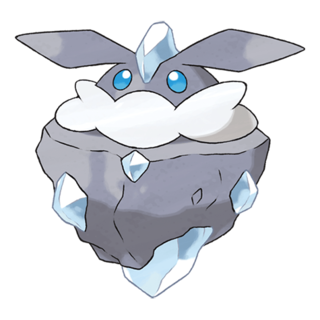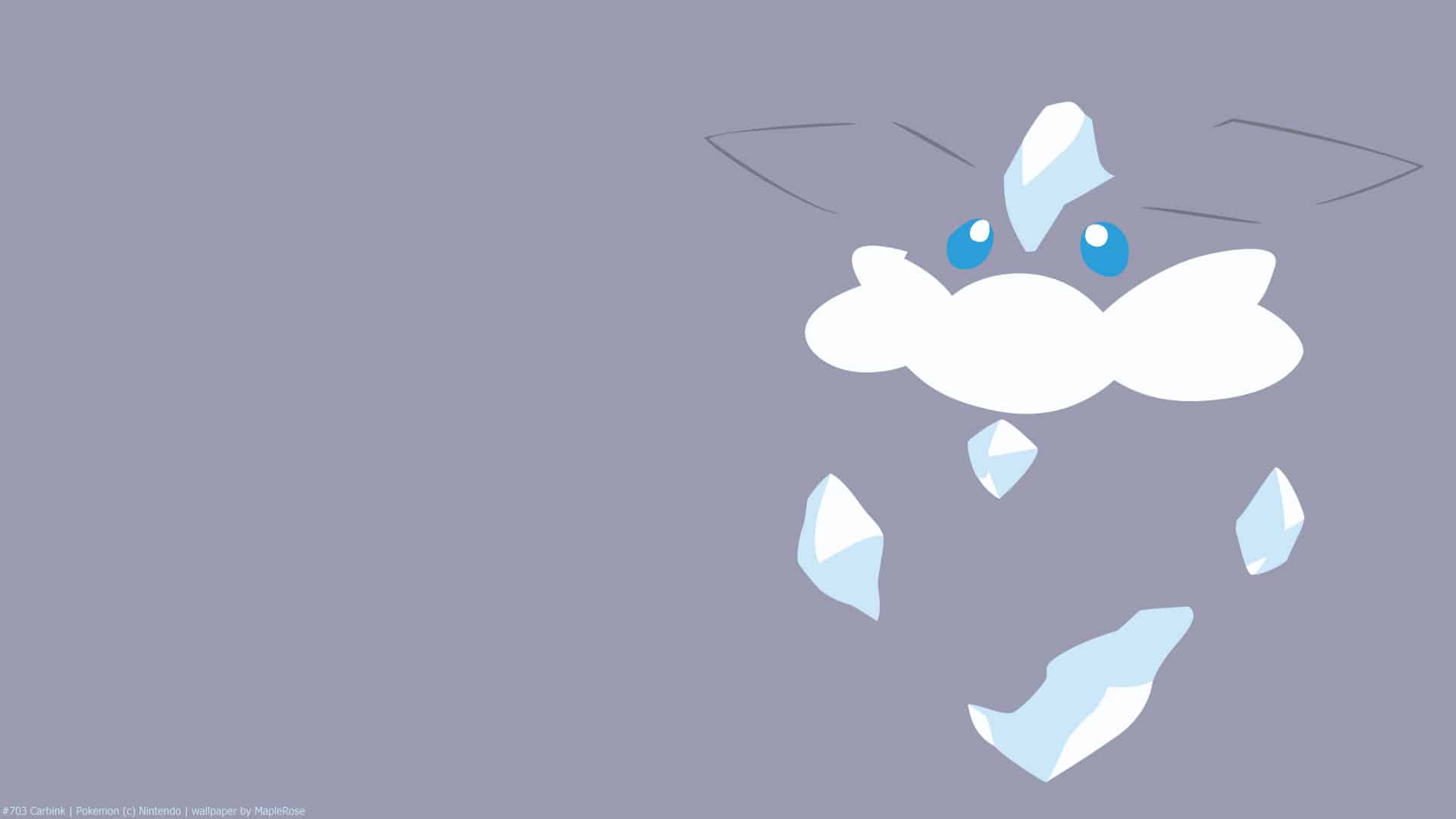Ready for Bastiodon 2.0? Well ready or not, here it comes! CARBINK has sneakily made its way to Pokémon GO for those who have already purchased the Global GO Fest ticket. How good is it in PvP? Well, hold onto your butts, folks, because the only summary I need to put here at the top is that Carbink is really, REALLY good and should impact Great League immediately. Read on for the details!
CARBINK Stats and Moves
 Carbink
RockFairy
Carbink
RockFairy
Great League Stats
| Attack | Defense | HP |
|---|---|---|
| 85 (84 High Stat Product) | 248 (251 High Stat Product) | 126 (127 High Stat Product) |
(Highest Stat Product IVs: 5-15-15, 1498 CP, Level 49.5)
So the obvious comparison, for multiple reasons, is Bastiodon. Carbink is ever so slightly inferior in bulk (Bastie averages slightly less Defense but also about a dozen more HP) and stat product (Bastiodon outpaces it by about 100, 2760-something rather than Carbink’s 2650-something). But these are rather minor quibbles… the Top 4 Pokémon in Great League by stat product are Chansey, Bastiodon, Blissey, and then Carbink, and the next closest Pokémon (Umbreon) is about 200 behind that. Bastiodon and Carbink are close enough that the slight difference in bulk really isn’t a big factor.
The REAL difference between them is the typing. Both are Rocks, of course, but Bastiodon’s Steel subtyping leaves it with nine resistances (Bug, Dragon, Fairy, Ice, Psychic, Rock, Flying x2, Normal x2, and Poison x3), and only three weaknesses, though two of them (Fighting and Ground) are very famously double super effective. (The other weakness is to Water.)
Carbink drops Steel in favor of a Fairy subtype. This does some nice things, like makes Fighting damage deal only neutral, which is a massive distinction between it and Bastiodon. It also makes Ground damage only a single level of super effective, and retains the weakness to Water. But the downside is that Steel is mostly a very good defensive typing… much moreso than Fairy. Carbink is still left with more resistances (six: Bug, Dark, Fire, Flying, Normal, and 2x to Dragon) than vulnerabilities (four: Ground, Water, Grass, and 2x to Steel), so it’s still looking good. Just know that if it feels less tanky as Bastiodon, it’s much more the inferior resistance profile than the actual stats.
The other difference, of course, is the moves.
Fast Moves
- Rock Throw – Rock type, 4.0 DPT, 2.5 EPT, 1.0 CoolDown
- Tackle – Normal type, 3.0 DPT, 3.0 EPT, 0.5 CD
Tackle is viable and MAY have more use in certain Cup formats, but 90% of the time, it’s set-it-and-forget-it with Rock Throw. It’s a better move in nearly every way, dealing 33% more damage (and actually more than even that, thanks to STAB) with only a 17% drop in energy generation as compared to Tackle.
The more interesting comparison, perhaps, is to a move that Carbink doesn’t even have: Smack Down, because Smack Down is Bastiodon’s fast move of choice. And it is a better move, dealing the same 4.0 Damage Per Turn as Rock Throw, but generating 2.66 Energy Per Turn instead of Rock Throw’s 2.5 EPT. You can quibble a bit on the fact that Rock Throw is a “faster” move (with a 1 second/2 turn cooldown as opposed to Smack Down’s 1.5 second/3 turn cooldown period), but that’s unlikely to be noticed as much as the (admittedly slight) difference in energy. As just one example of that: if Carbink had the same Stone Edge that Bastiodon does, Carbink would continually be at least one turn behind Bastie in firing Stone Edge off, as you can see in this example. Not a huge difference, but it IS another small advantage to Bastiodon.
Where Carbink has the potential to pull ahead, however, lies in the charge moves.
Charge Moves
- Rock Slide – Rock type, 75 damage, 45 energy
- Moonblast – Fairy type, 110 damage, 60 energy, 10% Chance to Reduce Opponent Attack -1 Stage
- Power Gem – Rock type, 80 damage, 60 energy
Rock Slide is not a “better” move than Stone Edge, having a worse Damage Per Energy than Edge, meaning basically you’re getting less damage for your energy investment. BUT, I think it’s safe to say it may be a better move for something stuck with subpar energy generation, like Carbink and Bastiodon are. Coming 10 energy cheaper than Stone Edge means two less Rock Throws. (It’s nine of them to hit exactly 45 energy for Slide, and eleven to get to the 55 energy required for Edge.) That difference can be HUGE.
Conversely, Moonblast (and technically Power Gem, but it’s such a bad move compared to the alternatives here that I won’t be mentioning it again) is MORE expensive than Bastiodon’s typical coverage move Flamethrower. But because Rock Slide is so inexpensive, Carbink can get to a Rock Slide “bait” AND a followup Moonblast before, say, Bastie can reach two 55-energy charge moves. So while Moonblast can feel painfully slow, Carbink has more than enough bulk to bait and STILL get to it in meaningful spots.
At least, in theory. What do the numbers say?
GREAT LEAGUE
We can keep this relatively light, since there’s not really multiple movesets or even multiple Leagues to look at. (Ultra League Carbink is not a thing, folks!) So… you ready? I’m not sure you are, because Carbink puts up even better numbers than does Bastiodon! (And yes, Bastie with Flash Cannon, as simulated there, rather than the more customary Flamethrower IS putting its best stubby foot forward, as it beats everything Flamethrower can AND wins the mirror match.) Bastiodon’s resistances allow it to outlast some things that Carbink cannot, such as Azumarill, Cresselia, Toxapex, and Venusaur. But look at all that Carbink can do that Bastie cannot: Medicham, Lanturn, Shadow Walrein, Vigoroth, Alolan Sandslash, Scrafty, Obstagoon, Defense Deoxys. That’s a heck of a list of pickups, folks.
And Carbink remains strong in other shielding scenarios as well. With shields down, Carbink and Bastiodon are more neck and neck, with Bastie remaining superior versus Grasses (Venusaur, Victreebel), Fairy damage (Cresselia, Azumarill), and things like Toxapex (triple resisting Poison certainly helps!), and Carbink instead beating up Fighters (Medicham, DDeoxys, Scrafty, Obstagoon, Vigoroth, and now Toxicroak too!) and survives Shadow Walrein’s Earthquake (unlike Bastiodon) and pulling out the win there too. And more of the same in 2v2 shielding, with Carbink again handling DDeoxys, Vigoroth, and Obstagoon, and Bastie remaining superior against Cresselia, Toxapex, Azumarill, Venusaur, and Victreebel. Again, neck and neck, though I’d argue still advantage Carbink due to the extra wins that allow it to separate itself in 1v1 shielding.
And it can actually get a bit BETTER but getting a bit WORSE. Wait… what’re you smoking now, JRE? Stick with me.
Carbink is crazypants expensive, just like Bastiodon, having to be pushed basically all the way to Level 50 for most high rank specimens. However, there IS a much cheaper way to go: a 15-15-15 “hundo” Carbink, which hits a nice cool 1495 CP way down at Level 41.5, a massive savings in dust and XL Candy. Normally that wouldn’t be recommended, but you know what? Not only does Carbink handle this well, but it might even be a bit better for it. In 1v1 shielding, hundo Carbink maintains ALL the same wins as the higher rank (and much higher level) ones, and in 2v2 shielding and with shields down, it has a higher number of wins! In both cases, it gains Azumarill, and in 0shield it maintains all its other wins from before. In 2v2 shielding, it further gains Alolan Sandslash and Dunsprace, though there’s a tradeoff this time, with Defense Deoxys and Vigoroth slipping away. But still, it’s pretty rare to see such a massive gap between hundo (very low rank PvP IVs) and high rank IVs mean so little. I strongly recommend giving serious consideration to a hundo (or near-hundo) Carbink if you land one! Good luck, folks.
IN SUMMATION….
Put simply, Carbink WILL have immediate impact on any Great League meta where it’s eligible, starting now. Not sure if this will hold, but PvPoke (whose rankings I trust more than ANYone else out there) has it arriving in Open Great League at Rank #1 (!!!), knocking Registeel off its long-held throne. I won’t say it’s strictly better than Bastiodon, but I WILL say that its ability to flip the “Fighters prevent Bastie grinding” mythos on its head is very intriguing, and it’s one to keep an eye on in future GBL formats and even the Pokémon GO Championship Series and Play! Pokémon tournaments. This might be the most impactful addition we’ve had to Great League in quite some time, and I don’t think I’m exaggerating by saying that at all.
Gonna wrap it up right here, as I have TWO other in-progress analyses to get out the door: the new batch of Shadow Pokémon (just about done!) and a meta review of Single-Type Cup that we’re going to have for back to back weeks! (Hopefully analysis done tomorrow, maybe not until Friday.)
So until next time, you can always find me on Twitter with regular analysis nuggets or Patreon, if you’re feeling extra generous.
Good hunting, folks! Do stay safe out there, and catch you next time, Pokéfriends!


